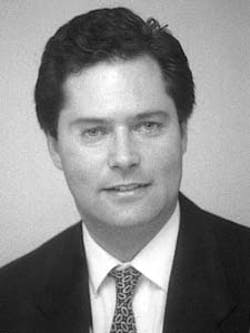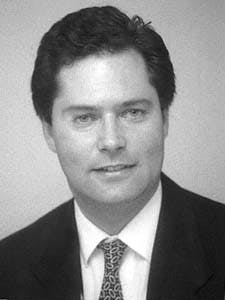European refiners must seek creative processes to justify heavy-ends projects
Phil HuntThere are strong reasons for want ing to upgrade the bottom of the crude oil barrel. But European refiners will not find it easy to get approval and funding for major capital investment projects.
Chem Systems Ltd.
London
In most cases, investment justification will have to be "creative" and may need to rely on factors traditionally considered to be outside the conventional refinery fence. Examples of such creative upgrading schemes are those employed in four gasification projects planned for refineries in Italy (OGJ, Oct. 21, p. 36).
It is clear that the major obstacles to heavy residue processing are not technical, but economic. A review of these obstacles will set the stage for European investment in bottom-of-the-barrel processing.
Industry overview
Western Europe is a major refining center. Western European refiners account for 18% of global refining capacity (Fig. 1 [16444 bytes]). Western Europe's portion of global capacity used to be more than 20%, but refinery closures in Europe, coupled with capacity additions in Asia and the Middle East, have shifted the balance toward the southeast.
The global demand barrel is evolving toward lighter products, and the U.S. has led the way. Residue upgrading and conversion already have played a role in this transition.
In the U.S., coking was a popular solution to the problem of reducing fuel oil production. This option will not be so widely applied in other regions, for reasons that will be explained.
In Europe, overall demand for petroleum products is forecast to show some, albeit very modest, growth. Heavy fuel oil accounted for 105 million tons of the 600 million tons of refined products demand in Western Europe during 1995 (Fig. 2 [20125 bytes]). Of this 105 million tons, 75 million was for inland fuel oil and 30 million for bunker fuel.
Projected growth for heavy fuel oil is negative (Fig. 3 [21571 bytes]). Chem Systems Ltd., London, projects inland consumption to decrease 2.6%/year over the 1995-2010 period. In contrast, bunkers demand is projected to increase 0.7%/year over the same period.
Demand for heavy fuel oil is far from uniform across Western Europe (Fig. 4 [14594 bytes]). Italy is the largest consumer in the region because of its dependence on heavy fuel oil for power generation.
In the bunker fuel market, the Netherlands is the largest consumer because of the extensive port and shipping activities in the Amsterdam/Rotterdam/Antwerp region. Belgium is Western Europe's second largest consumer of bunkers.
Heavy fuel oil quality
Current European Union (EU) legislative changes relating to fuel oil quality are aimed at reducing the sulfur content of fuel oil used for combustion. The Draft Liquid Fuels Directive is an example of such legislation.
The quality of inland fuel oil in the major European markets already has undergone considerable change. This is demonstrated by Italy's recent demand profile (Fig. 5 [12892 bytes]).
In Italy, demand for high-sulfur fuel oil (HSFO) has decreased steadily since 1985. HSFO has been replaced by low-sulfur fuel oil (LSFO) and very-low-sulfur fuel oil. This change represents a major shift in Europe's largest fuel oil market.
The future specifications of fuel oil are illustrated somewhat simplistically in Fig. 6 [15992 bytes]. This figure reinforces the trend described for Italy.
EU regulations result from the often complex and confusing interactions between local, national, and EU jurisdictions and, as a result, are very specific to countries, areas, and, ultimately, sites.
Refiners will find it increasingly difficult to find outlets for HSFO (fuel oil containing 3.0 wt % sulfur or more). The fuel increasingly will be used in the bunkers market, in cement manufacturing, and as fuel in plants that have flue gas desulfurization facilities or gasification units.
By 2005, the sulfur content of fuel oil used in most combustion plants not equipped with flue gas desulfurization is likely to be 1.0 wt %, and in some cases even lower. This means that the overall sulfur content of the heavy fuel oil pool must be reduced significantly over the next decade.
Lower sulfur emissions can be achieved in several ways, including via:
- Supply-Switching to low-sulfur crudes or balancing through trade (see following section)
- Refining-Removing and recovering sulfur
- End user-Desulfurizing flue gas.
Legislation such as the EU's Large Combustion Plant Directive allows countries some flexibility in how they achieve their designated reduction targets. For this reason, there is a wide range of sulfur concentrations allowable in power generation (for example, the U.K. vs. Italy).
Trade patterns
To alleviate the fuel oil imbalance, refiners will continue to have the option of relying on world trade opportunities rather than making capital investments or switching crudes. Western Europe can and will export HSFO and import LSFO.
Chem Systems' speculative projections for global net trade in heavy fuel oil show that export markets for HSFO are diminishing and becoming more remote, assuming only known and announced investment in heavy-ends processing materializes (Fig. 7 [29835 bytes]).
The only region that is forecast to continue to have a significant deficit in HSFO is Asia. All other regions show a surplus of HSFO and a deficit in LSFO, apart from the Middle East, which has a surplus of both grades.
The consequence of these factors on net trade is likely to be a reasonable balance with respect to traded volume, but a surplus of HSFO and a deficit of LSFO (Fig. 8 [14279 bytes]). Europe will represent one of the more extreme examples of this trend.
Western Europe is in reasonable balance across the barrel in 1995, but by 2005 a large surplus of fuel oil and a deficit of all other products is forecast to develop (Fig. 9 [16209 bytes]). This provides an incentive not only to reduce the sulfur content of HSFO, but also to upgrade it to white products.
The bitumen alternative
In these days of minimal investment, one potentially attractive option for disposing of HSFO is to place it in the bitumen market. This option requires minimal investment, and there is no limit on the sulfur content of bitumen.
Fig. 10 [16831 bytes] shows Western Europe's supply/demand profile for bitumen on a country-by-country basis.
The market is broadly in balance and is projected to remain so. Total market demand is about 18 million tons/year, and is unlikely to grow enough to accommodate the large HSFO surplus projected for 2005.
Perhaps even more important than the supply/demand issue is that bitumen is becoming a specialty product that is difficult to produce at many major fuels refineries. Bitumen is no longer a commodity product; it generally requires specialized processing, formulation, blending, marketing, and technical support.
Increasingly, bitumen is produced by dedicated bitumen refineries running distinctive crudes, usually from Venezuela and the Middle East. Major fuels refiners are exiting bitumen manufacturing because of the constraints of processing these crudes, and because of the other factors cited.
Upgrading options
There is no shortage of technical options available for upgrading HSFO. These options are illustrated, in simplified terms, in Fig. 11 [21104 bytes]. None of the processes shown in Fig. 11 are low-cost or low-commercial-risk options.
Gasification is finding selective application, particularly in Italy, where the established pricing environment is suitable to allow these projects to proceed. The growing demand for power in Italy also is a key factor in enabling at least two of these projects to proceed in the next few years. These projects are at the ISAB and Saras refineries. If the API project proceeds, power demand can be considered a key factor there too.
Coking has been a popular choice in the U.S.; however, the net result is that global coke markets are well supplied. Selected niche opportunities may exist still, but Chem Systems considers widespread application of new coking units in Europe unlikely.
Residue conversion and hydrodesulfurization also are likely to play a role. Residue hydrocracking (LC-fining) units are being installed in Raffineria Mediterranea SpA's refinery in Milazzo, Sicily, and in Slovnaft's refinery in Bratislava, Slovakia.
Petrofina has commissioned a large unit for atmospheric residue desulfurization at its refinery in Belgium. And Shell and Exxon have been active in applying heavy-ends processing facilities in their larger flagship refineries in Europe (OGJ, Apr. 26, 1993, p. 64).
Upgrade incentives
The technical and market incentives to install residue upgrading units are clear. The more difficult area to understand is the commercial incentive.
Little encouragement can be gained from examining the historical spreads between gas oil and HSFO, and between gasoline and HSFO (Fig. 12 [15331 bytes]). The highs experienced in 1990 may have supported new investment, but the lows of 1995, if sustained, will offer inadequate pay-back. As a result, refiners must rely on (or hope for) a significant widening of the spreads.
The spread between LSFO and HSFO also offers little direct encouragement for investment in residue desulfurization, which typically requires a differential of about $40/ton to support (Fig. 13 [10743 bytes]). It should be stressed, however, that the prices shown in Fig. 13 are on an FOB (export) basis.
Adopting an export-basis HSFO vs. import-basis LSFO spread offers a little more encouragement, but would make any desulfurization investment subject to significant commercial risk.
The magnitude of recent economic incentives for residue desulfurization and upgrading are shown in Fig. 14 [16111 bytes].
Refinery planners will have to determine how large they expect these investment incentives to be in the future. At present, the industry consensus is that they are not large enough.
Margins
If European refiners are looking for encouragement, they will not find it in refinery margin performance. The only good news following the lows experienced in 1995 is that things can only improve, although almost certainly slowly and not very dramatically (Fig. 15 [20010 bytes]).
Fig. 15 is important because oil companies and refiners tend to have short memories. When they are making money, they approve projects, as occurred in the late 1980s and early 1990s. But when margins are poor, investments are deferred or canceled, as is happening in the mid-1990s.
More and more heavy-ends projects are being put forward based on an element of "must do" rather than on stand-alone, commercial attractiveness. European refiners will make investments in heavy-ends processing in order to be competitive. There is, however, no easy and obvious solution. Each refiner must develop an investment strategy based on individual circumstances.
The Author
Phil Hunt is a director of Chem Systems, an independent consultancy to the refining and petrochemical industries. He is based in Chem Systems Ltd.'s London office, but worked for 3 years in Chem Systems Inc.'s office in Tarrytown, N.Y.
Hunt is responsible for Chem Systems' energy and refining practice, with geographical responsibility for Europe, the former Soviet Union, the Middle East, and India. He has directed assignments in most of the major global refined products markets. Before joining Chem Systems, he worked for Shell in a variety of refining posts.
Copyright 1996 Oil & Gas Journal. All Rights Reserved.

